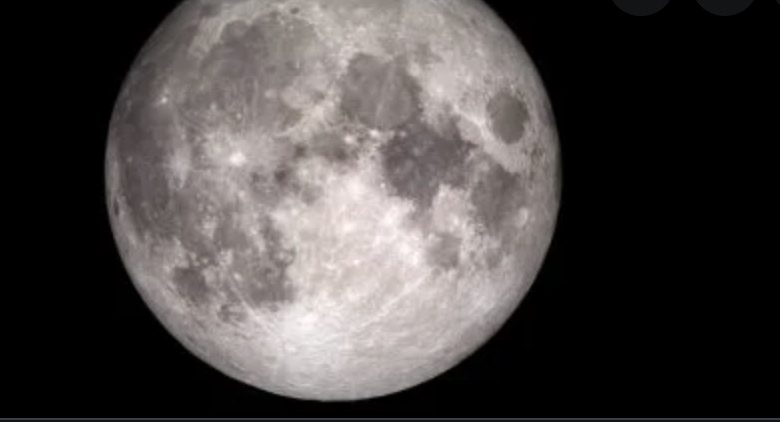Geological features

Surface geology
Main articles: Topography of the Moon, Geology of the Moon, Moon rock, and List of lunar features
Geological features of the Moon (near side / north pole at left, far side / south pole at right)
Topography of the Moon measured from the Lunar Orbiter Laser Altimeter on the mission Lunar Reconnaissance Orbiter, referenced to a sphere of radius 1737.4 km
Topography of the Moon
The topography of the Moon has been measured with laser altimetry and stereo image analysis.[70] Its most extensive topographic feature is the giant far-side South Pole–Aitken basin, some 2,240 km (1,390 mi) in diameter, the largest crater on the Moon and the second-largest confirmed impact crater in the Solar System.[71][72] At 13 km (8.1 mi) deep, its floor is the lowest point on the surface of the Moon.[71][73] The highest elevations of the Moon’s surface are located directly to the northeast, which might have been thickened by the oblique formation impact of the South Pole–Aitken basin.[74] Other large impact basins such as Imbrium, Serenitatis, Crisium, Smythii, and Orientale possess regionally low elevations and elevated rims.[71] The far side of the lunar surface is on average about 1.9 km (1.2 mi) higher than that of the near side.[1]
The discovery of fault scarp cliffs suggest that the Moon has shrunk by about 90 metres (300 ft) within the past billion years.[75] Similar shrinkage features exist on Mercury. Mare Frigoris, a basin near the north pole long assumed to be geologically dead, has cracked and shifted. Since the Moon doesn’t have tectonic plates, its tectonic activity is slow and cracks develop as it loses heat.[76]
Volcanic features
Main article: Volcanism on the Moon
The dark and relatively featureless lunar plains, clearly seen with the naked eye, are called maria (Latin for “seas”; singular mare), as they were once believed to be filled with water;[77] they are now known to be vast solidified pools of ancient basaltic lava. Although similar to terrestrial basalts, lunar basalts have more iron and no minerals altered by water.[78] The majority of these lava deposits erupted or flowed into the depressions associated with impact basins. Several geologic provinces containing shield volcanoes and volcanic domes are found within the near side “maria”.[79]
Evidence of young lunar volcanism
